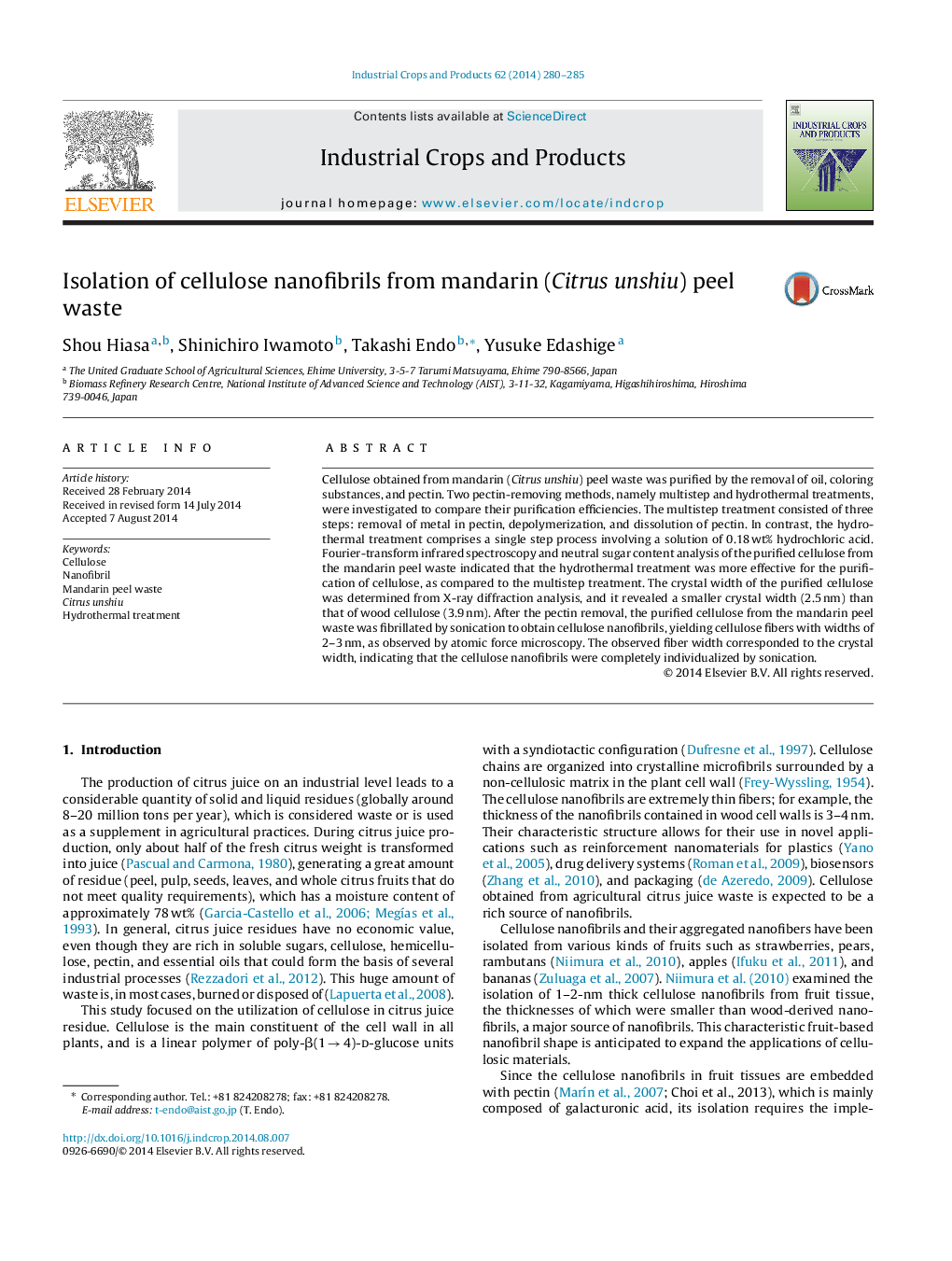| Article ID | Journal | Published Year | Pages | File Type |
|---|---|---|---|---|
| 6376504 | Industrial Crops and Products | 2014 | 6 Pages |
Abstract
Cellulose obtained from mandarin (Citrus unshiu) peel waste was purified by the removal of oil, coloring substances, and pectin. Two pectin-removing methods, namely multistep and hydrothermal treatments, were investigated to compare their purification efficiencies. The multistep treatment consisted of three steps: removal of metal in pectin, depolymerization, and dissolution of pectin. In contrast, the hydrothermal treatment comprises a single step process involving a solution of 0.18Â wt% hydrochloric acid. Fourier-transform infrared spectroscopy and neutral sugar content analysis of the purified cellulose from the mandarin peel waste indicated that the hydrothermal treatment was more effective for the purification of cellulose, as compared to the multistep treatment. The crystal width of the purified cellulose was determined from X-ray diffraction analysis, and it revealed a smaller crystal width (2.5Â nm) than that of wood cellulose (3.9Â nm). After the pectin removal, the purified cellulose from the mandarin peel waste was fibrillated by sonication to obtain cellulose nanofibrils, yielding cellulose fibers with widths of 2-3Â nm, as observed by atomic force microscopy. The observed fiber width corresponded to the crystal width, indicating that the cellulose nanofibrils were completely individualized by sonication.
Related Topics
Life Sciences
Agricultural and Biological Sciences
Agronomy and Crop Science
Authors
Shou Hiasa, Shinichiro Iwamoto, Takashi Endo, Yusuke Edashige,
